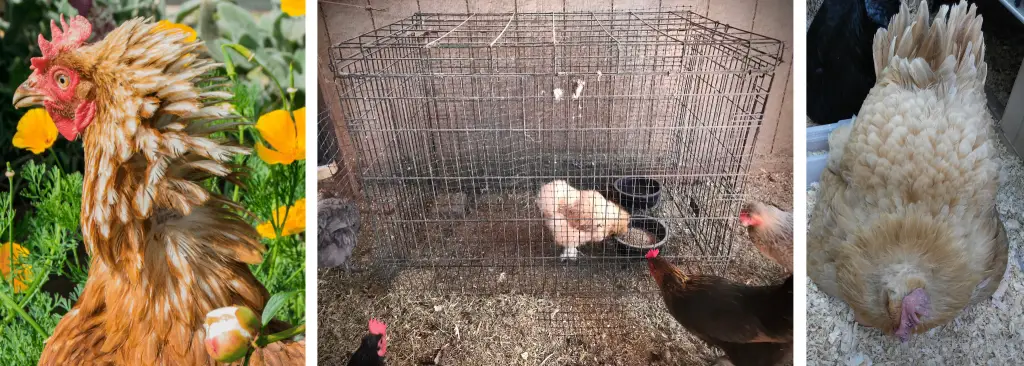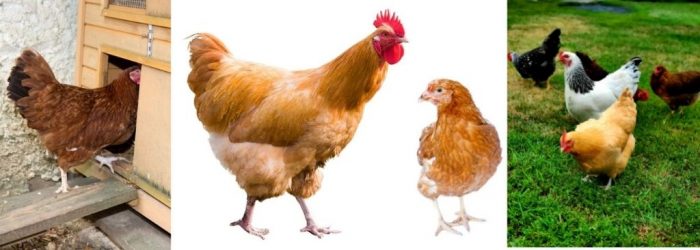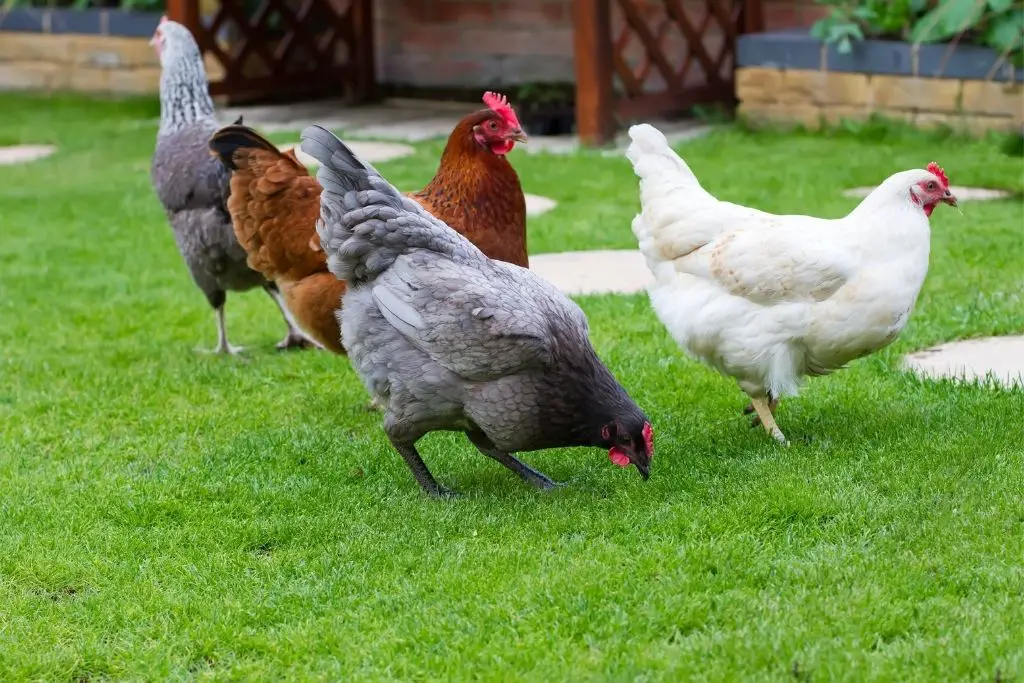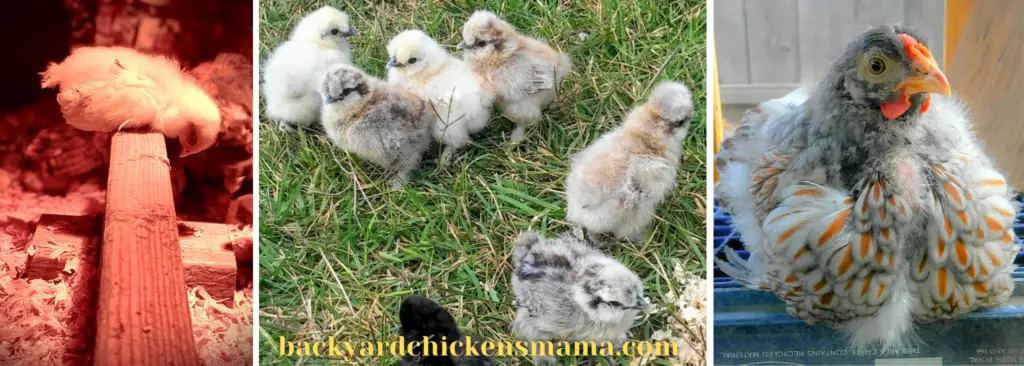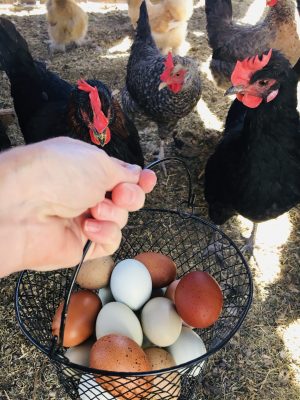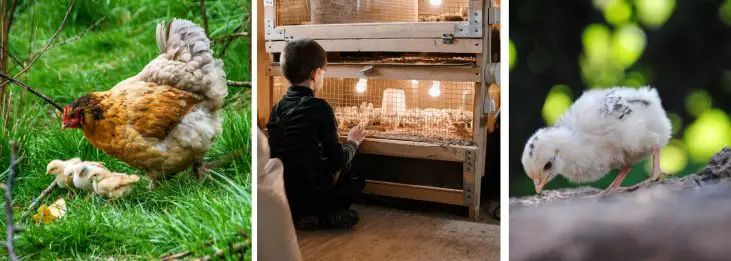
Baby chicks grow up very quickly. In a chicks first several weeks of life, much of their energy is spent on growing in their new “big girl” or “big boy” feathers. Before you know it they will begin to kick up a lot of dust and start to smell. But when can baby chicks go outside?
When chicks get a littl
e more active, it’s time to transition them out of the cramped brooder box and into a larger enclosure, but are they ready to go outside?
Increases egg laying natural
ly.- Improves chicken health.
- Deters parasites: mites, lice, fleas & flies as well as mice, rats, raccoons, coyotes, opossums and more!
- On SALE!
- Shop: Nesting Box Herbs
When Can Chicks Go Outside?
You may be wondering, “When can baby chicks go outside?” The short answer is when they are fully feathered, around 6 weeks. Depending upon the outside weather and the type of enclosure you provide for them will determine how much sooner you can transition baby chicks outdoors.
- When Can Chicks Go Outside?
- 1. When Can I Move My Chicks Out of the Brooder?
- 2. How Cold is Too Cold for Baby Chicks?
- 3. When Can Baby Chicks Go Outside Without a Heat Lamp?
- 4. When Can Chicks Go Outside With Their Mother?
- 5. When Can Chicks Go Outside With Other Chickens?
- 6. When Can Baby Chicks Go Outside?
- 7. Benefits of Bringing Baby Chicks Outdoors for Short Periods
- CONCLUSION: When Can Baby Chicks Go Outside? 14 Important Tips
- BONUS #8-14: More Frequently Asked Questions
- #8 Can 2 Week Old Chicks Go Outside?
- #9 Can 3 Week Old Chicks Go Outside?
- #10 Can 4 Week Old Chicks Go Outside?
- #11 Can 8 Week Old Chicks Go Outside?
- #12 When Can Baby Chicks Go Outside in Summer?
- #13 When Can Baby Chicks Go Outside in Winter?
- #14 When Can Chicks Go Outside in a Coop?
1. When Can I Move My Chicks Out of the Brooder?
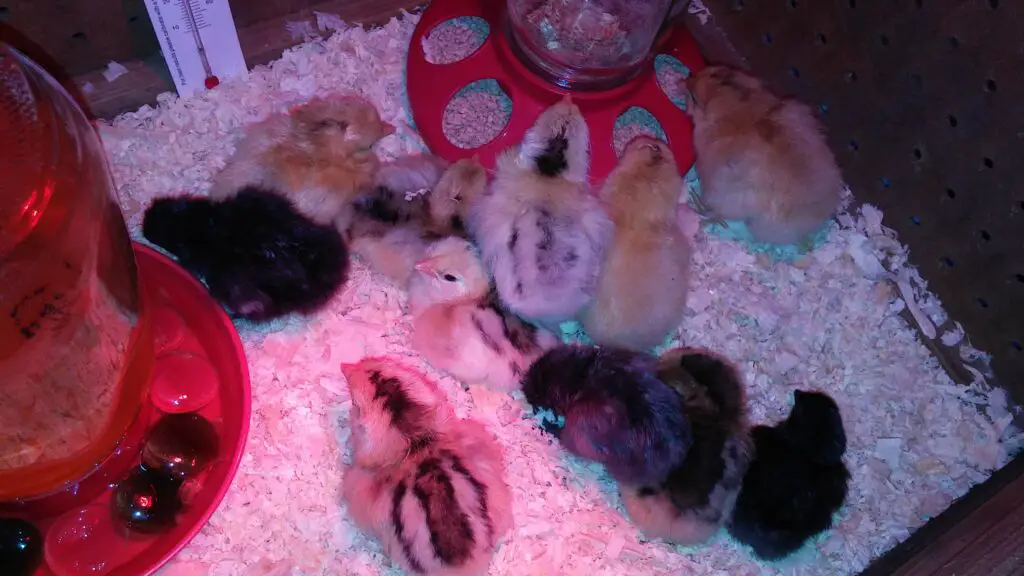
Baby chicks grow very quickly. A chicks first 4 weeks of life, they each need at least 1/2 square foot of space. From the fourth week through week eight this doubles to 1 square foot each.
As chicks grow, they ge
t more active and will be testing out their new wings. They need more space to move around.Brooder Size Requirements for Baby Chicks
| # CHICKS | MINIMUM SPACE WEEKS 1-4 | MINIMUM SPACE WEEKS 4-8 |
|---|---|---|
| 4 CHICKS | 1′ X 2′ | 2′ X 2′ |
| 6 CHICKS | 1′ X 3′ | 2′ X 3′ |
| 8 CHICKS | 1′ X 4′ | 2′ X 4′ |
| 10 CHICKS | 1′ X 5′ | 2′ X 5′ |
| 12 CHICKS | 2′ X 3′ | 3′ X 4′ |
| 16 CHICKS | 2′ X 4′ | 4′ X 4′ |
Once chicks reach about 4 weeks old, they are really active. They like to practice flapping their wings and flying across the enclosure. This is a good time to increase the space by at least twice the size.
For example, if you have 6 chicks that were originally in a 1′ x 3′ brooder, you will want to move 6 baby chicks that were originally in a 1′ x 3′ brooder into a brooder twice the size or 2′ x 3′.
2. How Cold is Too Cold for Baby Chicks?
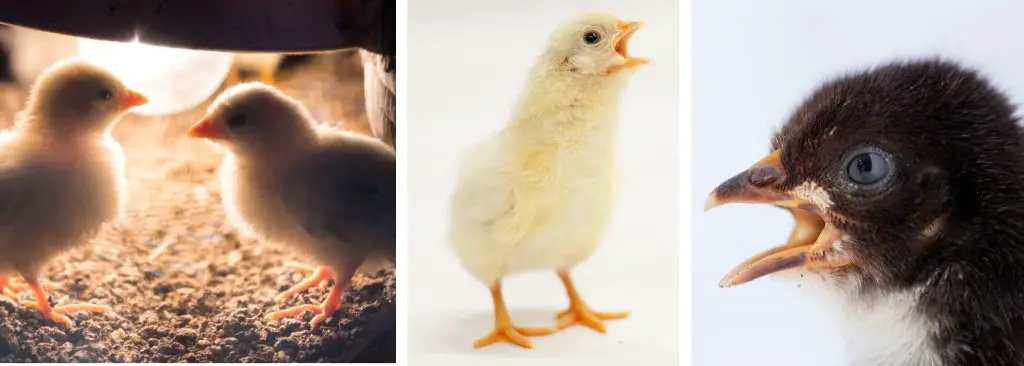
When raising baby chicks without a mama hen, it is important that you keep the brooder at the appropriate temperature until the chicks are fully feathered. Most chicks are fully feathered by 6 weeks of age.
The required brooder te
mperature for chicks changes week by week. For healthy and thriving baby chicks it is very important to provide the appropriate temperature.Weekly Temperature Chart for Baby Chicks
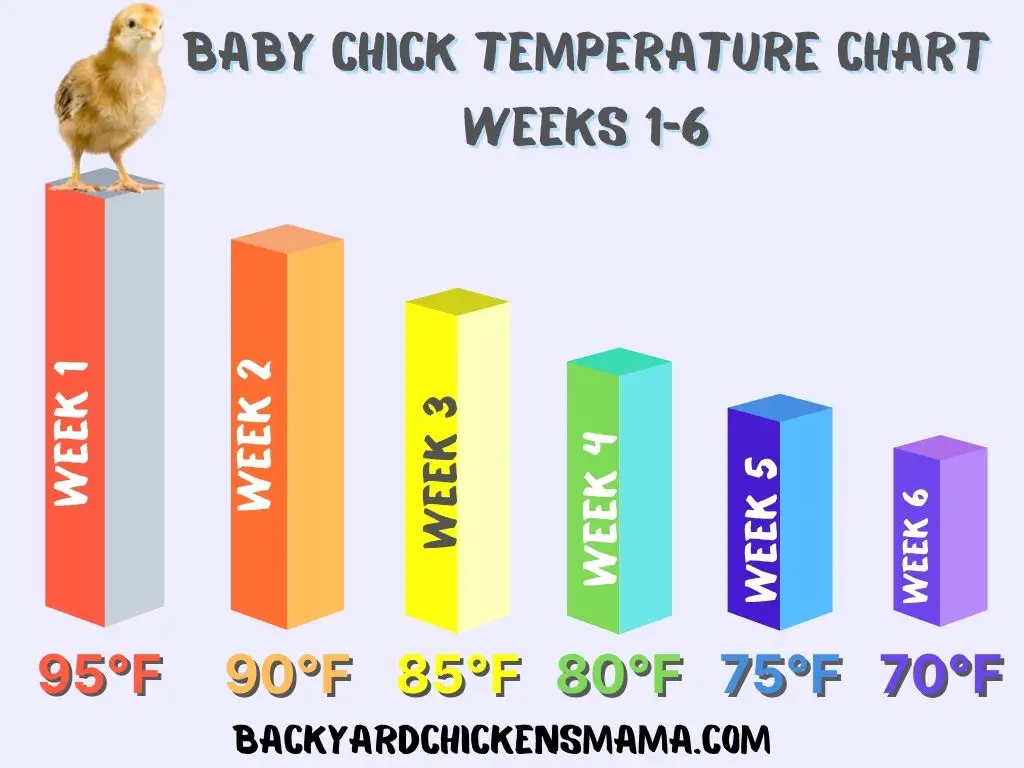
| AGE | HEAT |
|---|---|
| WEEK 1 | 95℉ |
| WEEK 2 | 90℉ |
| WEEK 3 | 85℉ |
| WEEK 4 | 80℉ |
| WEEK 5 | 75℉ |
| WEEK 6 | 70℉ |
3. When Can Baby Chicks Go Outside Without a Heat Lamp?
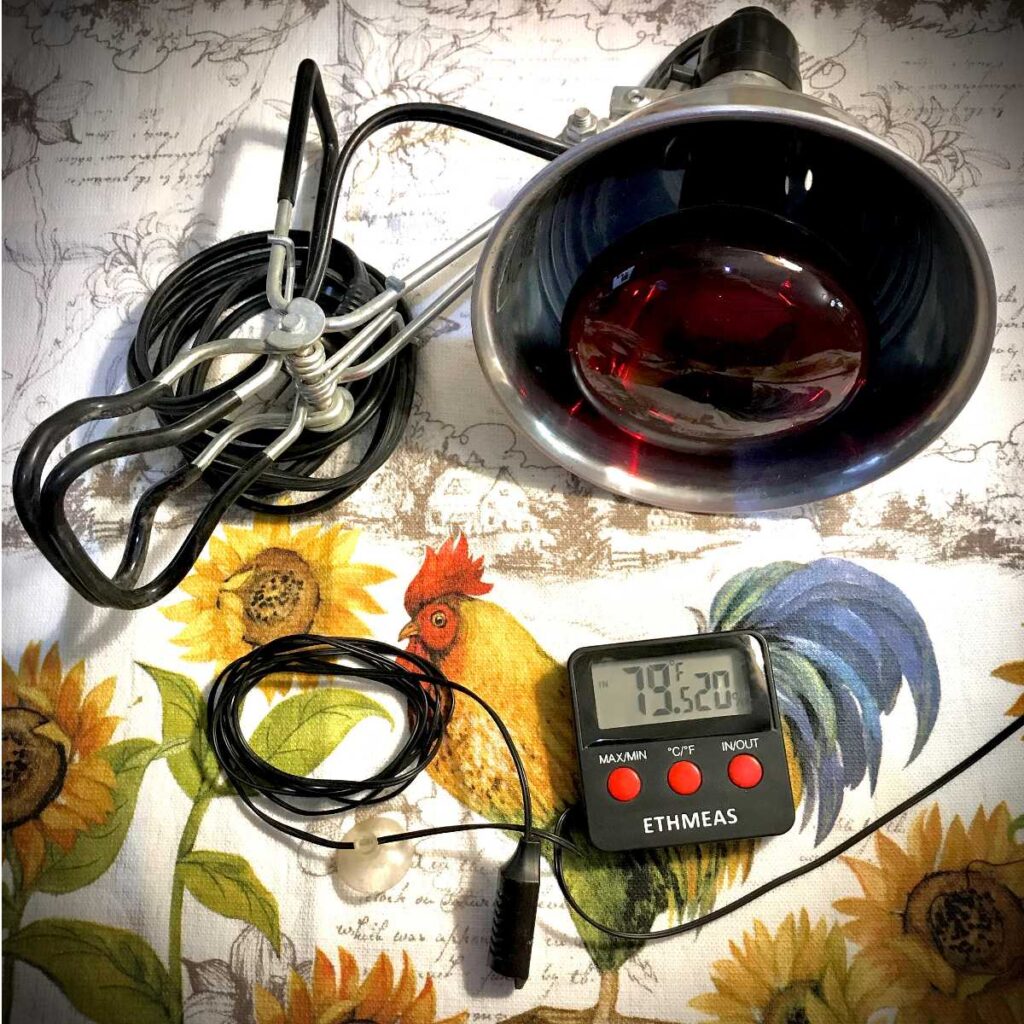
When afternoon temperatures reach the appropriate temperature for the age of your baby chicks, you can bring them outdoors for a a little supervised sunshine time.
So, if the outdoor temperature is 85℉, you can bring 3 week old chicks outside without a heat lamp, but it would be too cold to bring 1 week old baby chicks outdoors without additional heating.
When Can Baby Chicks Go Outside?
If you want to bring your young chicks outdoors for a little “field trip,” but the outdoor temperature is still too cold, provide a heat lamp. This way, they can still get a little sunshine and keep sufficiently warm at the same time.
Benefits of Bringing Baby Chicks Outdoors for Short Periods
- It allows chicks to gradually get used to the outdoors.
- When they are fully feathered and sleeping in their big girl or boy coop it isn’t as traumatic or stressful for them.
- Exposing your chicks to sunshine provides them with beneficial Vitamin D.
- It allows them to eat little bugs, greens and rocks.
- Allows you to bond with your chicks as you supervise them outdoors.
How to Tell if Your Baby Chicks are Cold
| HOW TO TELL IF YOUR BABY CHICKS ARE COLD |
|---|
| CHICKS CHIRP LOUDLY |
| CHICKS HOVER TOGETHER UNDER THE HEAT LAMP |
| DIARRHEA |
| “PASTY BUTT“ |
| CHICKS PUFFED UP |
| CHICKS LEGS COLD |
4. When Can Chicks Go Outside With Their Mother?
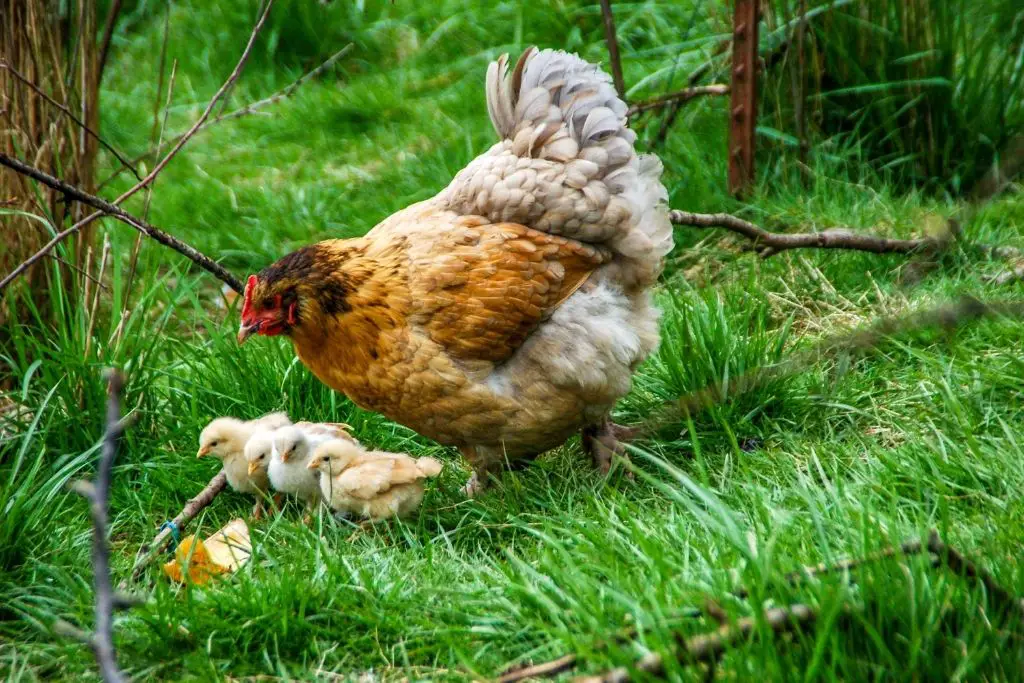
Chicks can go outside with their mother from the day they hatch.
A mother hen instinctively knows how to keep her baby chicks warm. After they hatch, she keeps them under her breast or belly until they are completely dried off.
A mama hens internal body temperature is about 106℉ and her skin is about 99.5℉. This is perfect for newly hatched chicks.
Baby chicks will stay c
lose to their mama hen when she decides to venture out. Mama hen will begin teaching her chicks how to find food right away.If a chick begins to stray off, mama hen will use her beak to pull her chick close to her and tuck them underneath her to keep them warm.
5. When Can Chicks Go Outside With Other Chickens?
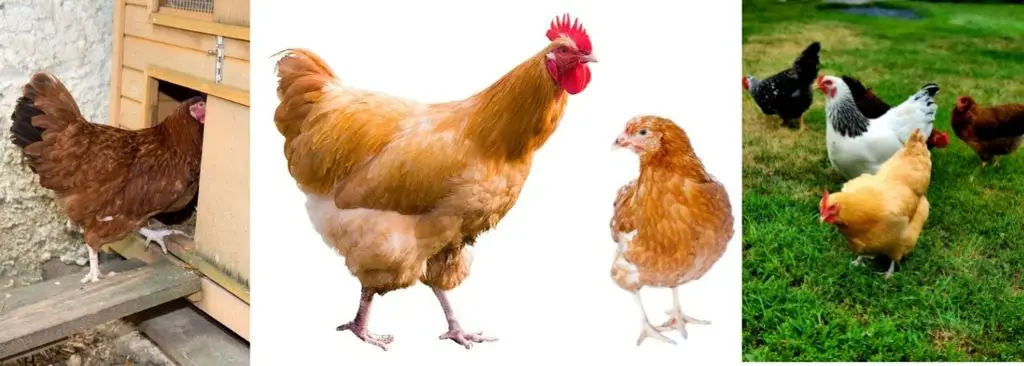
If mama hen hatched a clutch of chicks, she will protect them from the rest of the flock and they will naturally integrate into the existing flock. If YOU are introducing two flocks, it is important to wait until they are of equal size before merging them together.
If you are planning on merging two flocks together, it is important to quarantine the new chickens away from the others for 30 days. This will minimize the spreading of any unknown diseases that the new chickens may be carrying.
After 30 days, you can
bring the two flocks closer together, separated by chicken wire. This way they can get used to seeing and hearing each other.When the younger chickens get to be of equal size to your already existing flock, you can try combining the two together.
Some people like to place the new chickens on the roost at night. Others like to combine the two flocks when they are out free ranging.
Either way is fine. I
just suggest that you are able to monitor them in the morning when they wake up and leave the coop.If you combine them while they are out free ranging, throw out some treats to keep them occupied. It is natural for there to be some pecking and chasing going on. They need to work out their “pecking order.”
As long as they aren’t drawing any blood, let them work things out.
If you notice that you have a bully chicken, place it “chicken jail” for a few days. This will help to knock it down a few notches.
bile">